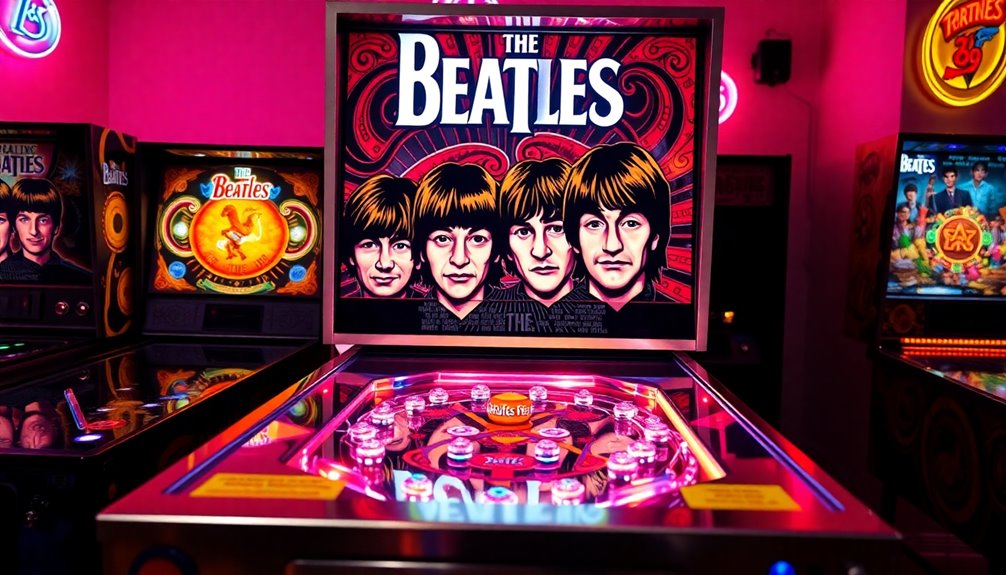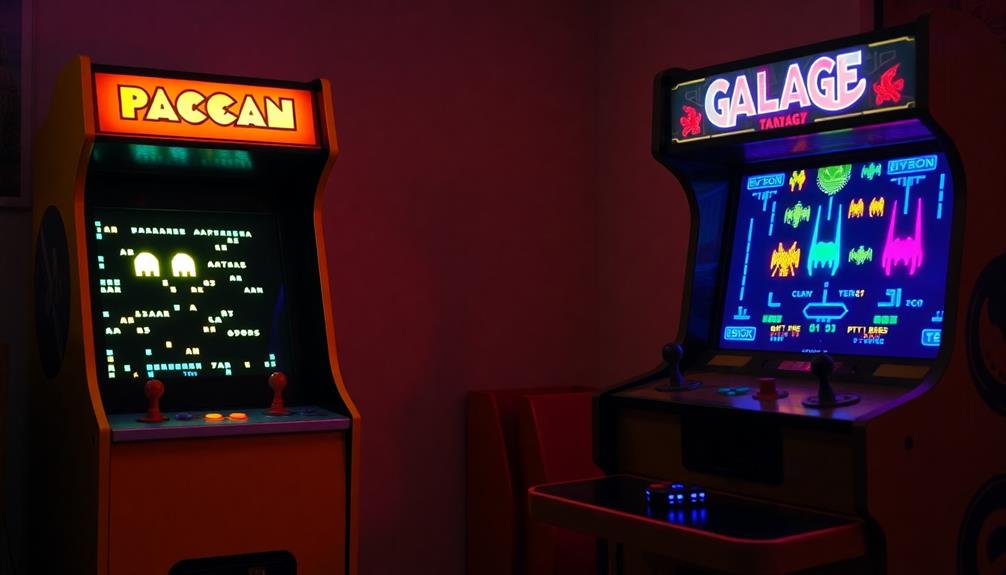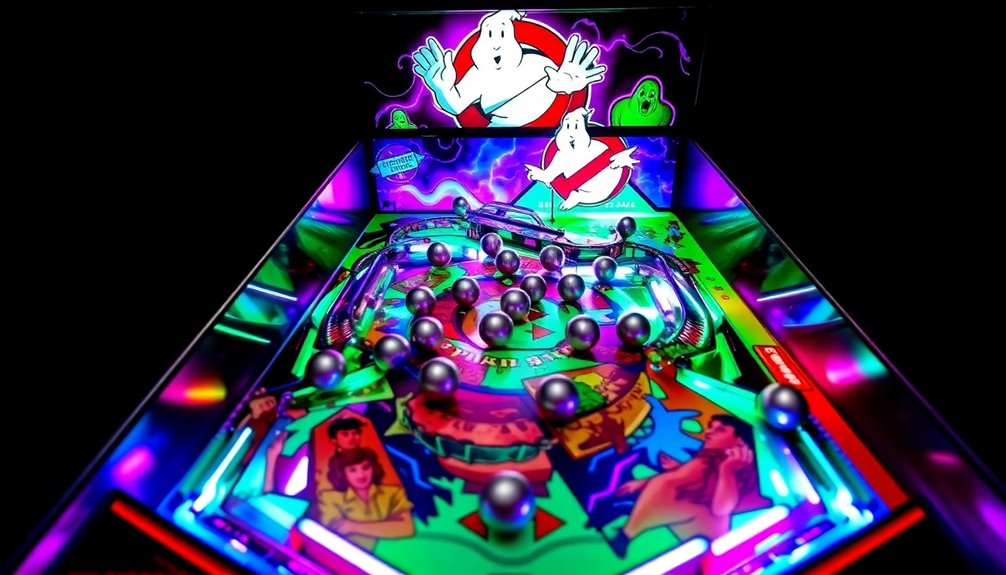Future trends in haptic playfields and VR integration will immerse you in multi-sensory experiences by combining advanced tactile feedback with seamless virtual environments. Expect more realistic textures, shapes, and force feedback that make virtual interactions feel authentic. Innovations include multi-sensory components like taste and smell, pushing immersion even further. Challenges remain around creating durable, scalable systems, but ongoing AI personalization and safety measures will enhance your experience. Keep exploring, and you’ll discover how these developments will transform how you play, learn, and heal.
Key Takeaways
- Integration of multi-sensory feedback (sight, sound, touch, taste, smell) for fully immersive VR experiences with haptic playfields.
- Development of advanced, durable haptic materials enabling realistic, scalable tactile interfaces in expansive virtual environments.
- Utilization of predictive modeling and AI to synchronize haptic feedback seamlessly with user movements and virtual interactions.
- Implementation of multi-user haptic playfields for collaborative, shared immersive experiences across various platforms.
- Emphasis on creating cost-effective, sustainable hardware to facilitate widespread adoption of high-fidelity haptic VR systems.
Advancements in Haptic Technology for Enhanced Sensory Feedback
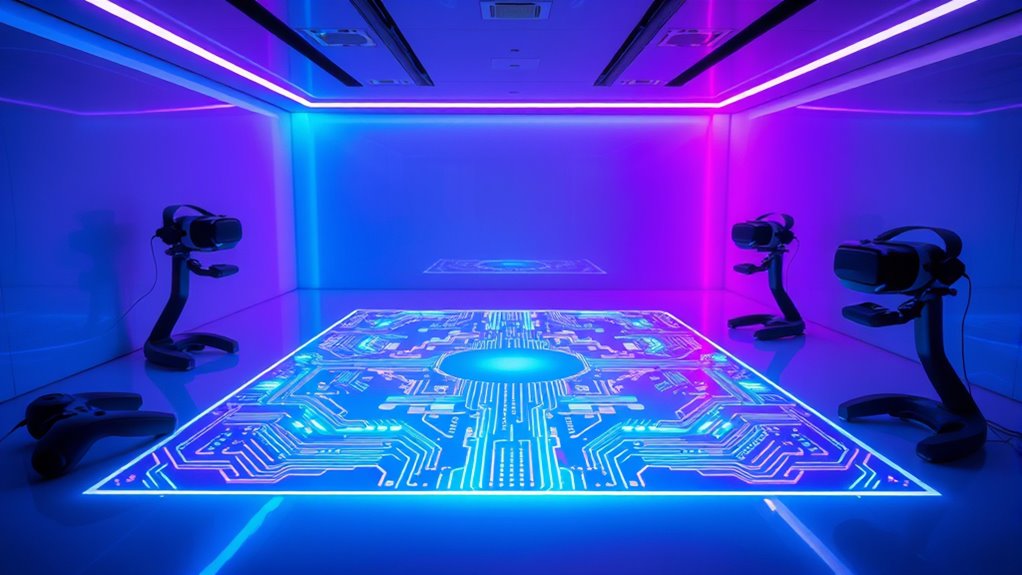
Recent advancements in haptic technology are revolutionizing how you experience sensory feedback in virtual environments. These innovations markedly improve tactile perception, making virtual interactions feel more realistic. Engineers are developing devices that deliver highly precise feedback, allowing you to feel textures, shapes, and forces with greater clarity. This feedback precision enhances immersion, enabling you to distinguish between different surfaces or objects effortlessly. This increased processing power supports more complex and nuanced haptic simulations, further elevating the realism of virtual experiences. As a result, your virtual experience becomes more intuitive and lifelike. The focus on refining tactile perception means that haptic devices can now simulate nuanced sensations, bridging the gap between digital and physical worlds. These breakthroughs are setting the foundation for more immersive, responsive, and engaging virtual environments, paving the way for next-generation VR experiences.
Seamless Integration of Haptic Playfields With Virtual Reality Systems

As you work to seamlessly integrate haptic playfields with VR systems, compatibility challenges can arise that hinder smooth interactions. Sensory synchronization techniques are vital to guarantee that tactile feedback aligns perfectly with visual and auditory cues. Overcoming these hurdles will considerably boost the immersive experience, making virtual environments feel more real and engaging. Additionally, ensuring AI safety measures are in place is crucial to prevent unexpected behaviors and enhance user trust in these advanced systems.
Compatibility Challenges
Integrating haptic playfields seamlessly with virtual reality systems presents a significant challenge because these technologies often rely on different hardware standards, communication protocols, and software architectures. Achieving hardware compatibility requires aligning diverse components so they work together without conflicts or performance issues. Similarly, software interoperability becomes critical, as the playfield’s control systems must communicate effectively with VR platforms, often built on different frameworks. Variations in data formats, latency requirements, and processing speeds can cause synchronization problems or limit system responsiveness. Overcoming these obstacles demands standardized interfaces and adaptable middleware solutions. Additionally, ensuring user safety and comfort during immersive experiences adds another layer of complexity to the integration process. Without addressing these compatibility challenges, users might experience disjointed sensations, reduced immersion, or technical failures that hinder the full potential of integrated haptic and virtual reality environments.
Sensory Synchronization Techniques
Achieving seamless sensory synchronization between haptic playfields and virtual reality systems requires precise timing and data coordination. You must fine-tune sensory calibration to guarantee tactile feedback aligns perfectly with visual and auditory cues. Techniques involve rapid data processing and synchronization algorithms that minimize latency, preventing disjointed experiences. Tactile illusions play a vital role, as they allow you to simulate sensations beyond the physical limitations of the hardware, enhancing realism. To optimize this, developers often use predictive modeling to anticipate user movements, adjusting haptic outputs proactively. Consistent calibration and real-time adjustments are essential for maintaining immersion. Incorporating high refresh rates can further improve synchronization by ensuring smoother feedback and reducing motion sickness. When executed correctly, these sensory synchronization techniques create a cohesive, convincing environment, where tactile feedback feels natural and integrated into the virtual experience.
Immersive Experience Enhancement
To create truly immersive experiences, seamless integration of haptic playfields with virtual reality systems is essential. Advances in haptic material development enable more realistic tactile feedback, aligning sensations with virtual environments. By applying sensory perception theories, designers can optimize how users interpret haptic stimuli, enhancing realism and emotional engagement. This integration ensures that touch sensations respond dynamically to virtual interactions, increasing immersion. Precise synchronization between visual, auditory, and haptic cues minimizes dissonance, deepening user involvement. As haptic materials become more versatile and responsive, your VR experiences will feel more authentic and compelling. Additionally, incorporating principles from home improvement strategies, such as creating designated zones for specific activities, can improve user comfort and interaction within virtual spaces. Ultimately, the goal is to create a seamless, multisensory environment where users forget the boundary between virtual and real, elevating the overall immersive experience.
Real-World Applications in Gaming and Entertainment
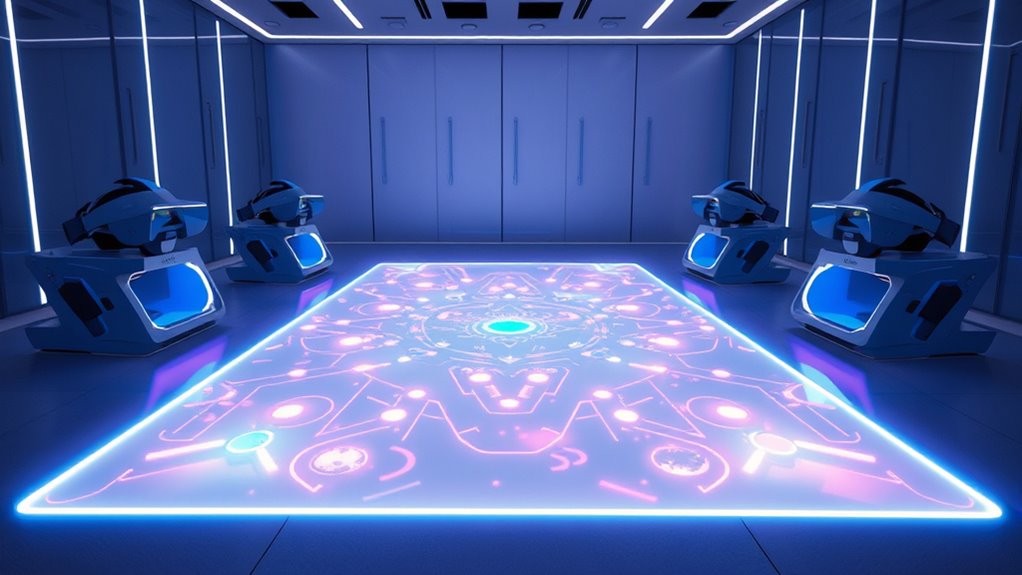
You’ll experience gaming like never before with immersive environments that respond to your every move. Enhanced sensory interactions make it feel as if you’re truly inside the game world, heightening excitement and realism. Next-generation game design leverages these technologies to create more engaging and dynamic entertainment experiences.
Immersive Player Experiences
Have you ever wondered how haptic technology is transforming the way players experience games and entertainment? With tactile storytelling, developers create immersive worlds where you feel the environment around you, making stories come alive through sensation mapping. This technology allows you to physically feel textures, impacts, and vibrations, enhancing emotional engagement. For example, in adventure games, you might sense the roughness of a stone wall or the gentle breeze of a virtual landscape. By simulating these sensations, players gain a deeper connection to the narrative and environment. Haptic devices enable a more visceral experience, blurring the line between digital and real worlds. As a result, immersive player experiences become more vivid, personal, and impactful, revolutionizing entertainment in ways that keep you fully engaged. Additionally, advancements in AI-driven content personalization are further tailoring these immersive experiences to individual preferences, elevating engagement to new heights.
Enhanced Sensory Interaction
Enhanced sensory interaction is rapidly transforming gaming and entertainment by bridging the gap between digital and physical experiences. Through tactile illusions and sensory augmentation, you now feel more immersed, with virtual objects seeming real. Haptic devices simulate textures and forces, creating a richer, more convincing environment. This technology heightens realism and engagement, making gameplay more visceral. Incorporating goal setting techniques can help developers align their innovations with user desires and expectations. This evolution makes your interactions more dynamic, pushing the boundaries of what entertainment can deliver.
Next-Gen Game Design
As next-generation game design integrates advanced haptic technologies, the line between virtual and physical experiences becomes increasingly blurred. You’ll find games that prioritize sustainable design, reducing hardware waste while enhancing immersion through realistic feedback. Cross-platform compatibility ensures your experience stays seamless across consoles, PCs, and mobile devices, expanding accessibility and engagement. Developers now craft environments that adapt to various devices, making immersive gaming more inclusive. Haptic playfields allow you to feel textures, impacts, and environmental changes, elevating gameplay realism. This evolution encourages creators to rethink traditional design, focusing on user-centric, eco-friendly solutions that deliver consistent experiences regardless of platform. Incorporating state-specific benefits into hardware and software development can further enhance the sustainability and effectiveness of next-gen gaming experiences. Ultimately, next-gen game design pushes the boundaries of entertainment, making virtual worlds more tangible, sustainable, and accessible for everyone.
Innovations in Training Simulations and Educational Tools
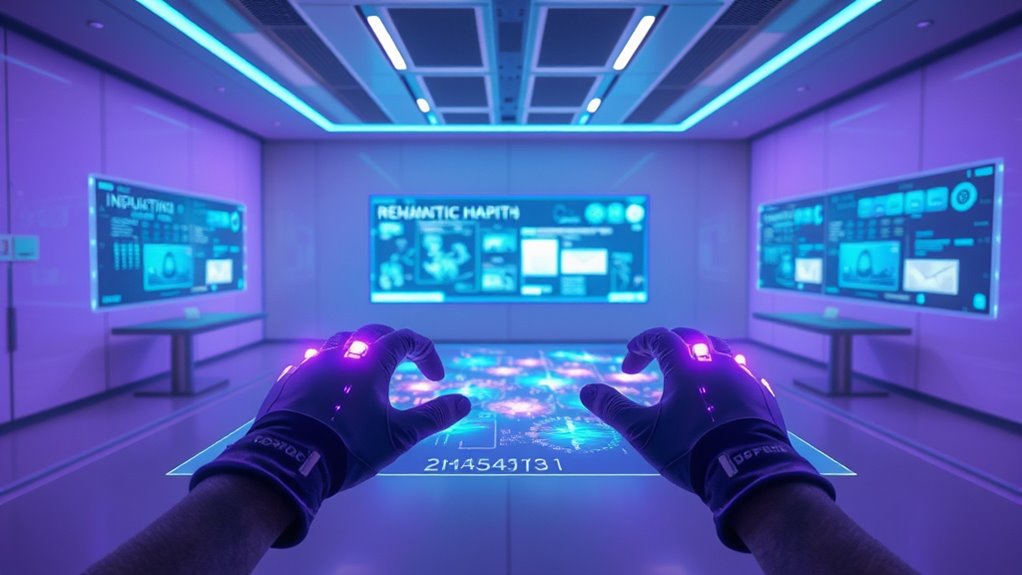
Innovations in haptic playfields and virtual reality are transforming training simulations and educational tools by offering more immersive and realistic experiences. You can now practice complex procedures in a controlled environment, reducing the need for physical resources. Advanced haptic feedback calibration ensures that sensations are precise, enhancing learning outcomes. Techniques like sensory deprivation are used to focus your attention on specific tactile cues, improving skill retention. These systems adapt to your responses, providing tailored feedback that mimics real-world scenarios. As a result, you gain confidence and competence faster. Educators leverage these innovations to create engaging, effective training modules that scale across disciplines. By integrating sensory deprivation and refined haptic feedback, you’re immersed in environments that bridge the gap between theory and practice seamlessly. Incorporating insights from health benefits, such as the anti-inflammatory effects of certain substances, can further enhance the design of these systems to promote mental well-being during training.
Impact on Therapeutic and Rehabilitation Practices
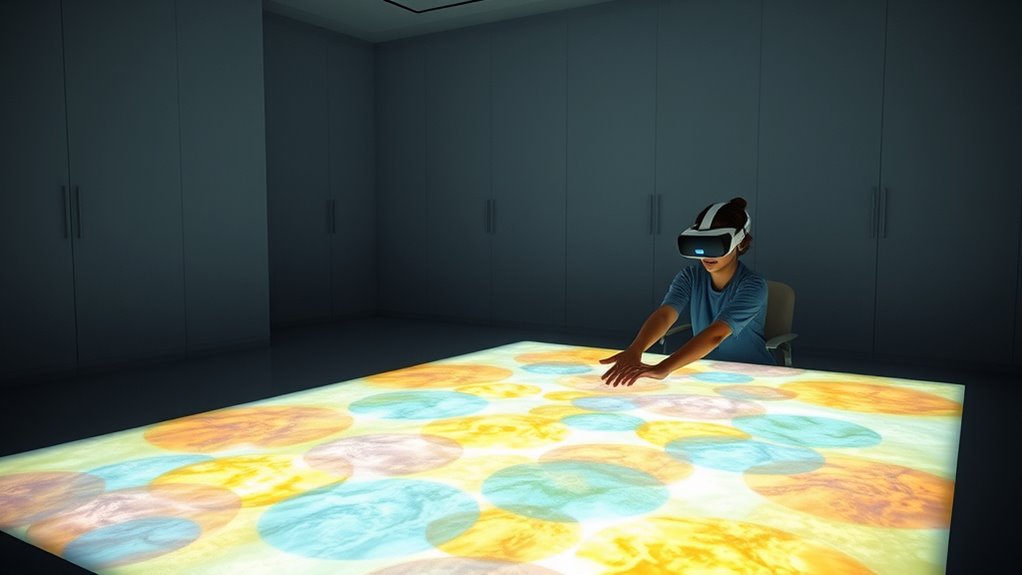
The integration of advanced haptic playfields and VR technology is revolutionizing therapeutic and rehabilitation practices by providing more engaging and effective treatment options. You can now harness biomechanical feedback to monitor and adjust movements in real time, ensuring precise recovery efforts. This real-time feedback capability enhances mindfulness during therapy, allowing patients to focus more fully on their movements and progress. Patients benefit from immersive environments that motivate participation and personalize therapy sessions, making exercises more relevant and less monotonous. With immediate feedback and adaptive difficulty levels, you can better track progress and tailor interventions to individual needs. Overall, these innovations are transforming rehab from traditional routines into dynamic, data-driven processes that accelerate healing and functional regain.
Challenges in Developing High-Fidelity Haptic Environments
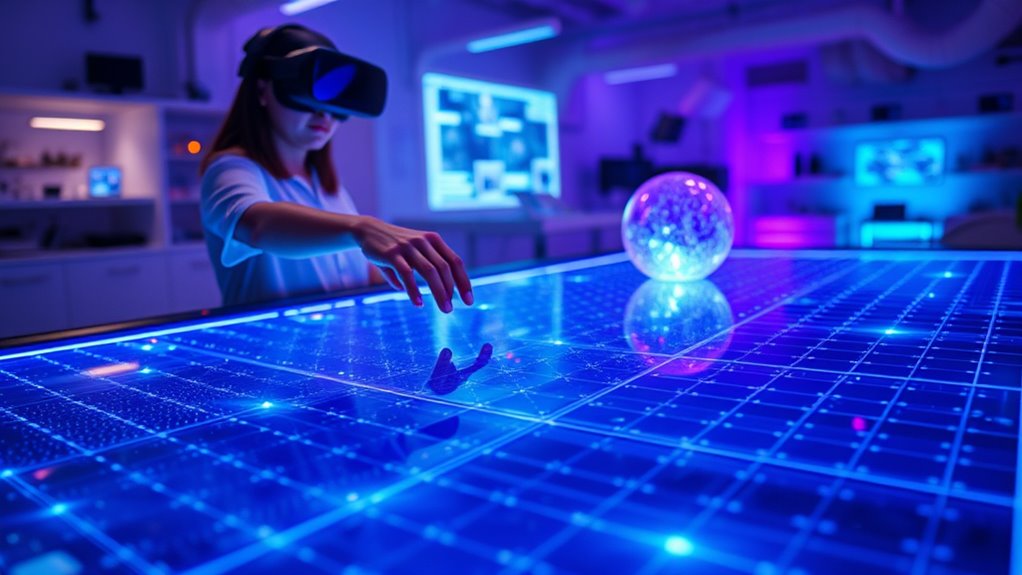
Creating high-fidelity haptic environments for VR requires overcoming significant technical hurdles. Material durability is vital to guarantee devices withstand repeated use without degradation, which affects both performance and user safety. Achieving cost efficiency is equally challenging, as high-quality components often drive up expenses. To address these issues, focus on:
Durable, cost-effective materials are essential for scalable, high-fidelity VR haptic environments.
- Selecting durable materials that extend device lifespan
- Balancing material quality with affordability
- Developing scalable manufacturing processes
- Integrating innovative, cost-effective actuation technologies
These factors directly impact the feasibility of creating accessible, realistic haptic feedback. Overcoming these challenges is essential for delivering immersive experiences that are both high-performing and financially viable. Without addressing material durability and cost efficiency, widespread adoption of advanced haptic environments remains limited.
Future Directions in Multi-Sensory Immersive Experiences

As technology advances, future multi-sensory immersive experiences will seamlessly combine sight, sound, touch, taste, and smell to deepen user engagement. Haptic feedback will play a pivotal role in delivering realistic sensations, making virtual environments feel more authentic. Sensory augmentation will enhance or simulate senses beyond natural capabilities, allowing you to experience flavors or scents that aren’t physically present. This integration will enable more immersive storytelling, training, and entertainment, blurring the lines between reality and virtuality. Devices will become more compact yet more sophisticated, providing richer feedback across multiple senses simultaneously. As a result, you’ll find yourself fully immersed in virtual worlds, where every sensation is finely tuned to match visual and auditory cues, creating a truly holistic experience.
Ethical Considerations and User Safety in Haptic-VR Environments

While haptic feedback enhances immersion, it also introduces critical ethical and safety concerns you must consider. Privacy concerns and data security are paramount, as sensitive user information can be vulnerable. To guarantee safety, be aware of these key points:
- Protect your personal data from unauthorized access.
- Understand how your usage data is collected and used.
- Be cautious of potential psychological impacts from intense sensations.
- Ensure devices meet safety standards to avoid physical harm.
Maintaining transparency from developers about data handling is essential. Always verify privacy policies and security measures. As haptic-VR environments grow more realistic, your safety and privacy should remain a priority, helping you enjoy immersive experiences responsibly.
The Role of Artificial Intelligence in Personalizing Haptic Interactions
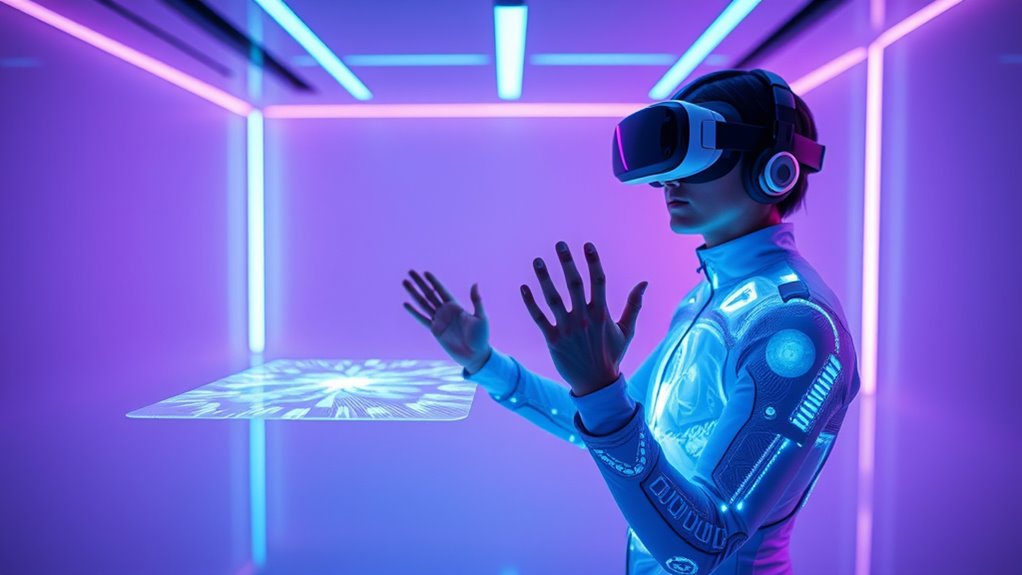
Artificial intelligence is transforming how haptic feedback is tailored to individual users, enhancing the realism and engagement of VR experiences. With adaptive algorithms, AI analyzes your actions and responses in real-time to deliver personalized feedback that feels natural and immersive. This means every touch, vibration, or resistance responds dynamically, matching your movements and intentions. AI-driven personalization ensures that the haptic interactions evolve based on your preferences and behavior, creating a more intuitive experience. As a result, you’ll notice increased immersion and a stronger sense of presence within virtual environments. This technology allows developers to craft more realistic and compelling haptic sensations, making your interactions more meaningful and tailored to your unique style. Ultimately, AI’s role is to make VR feel more responsive and personalized than ever before.
Frequently Asked Questions
How Will Haptic Playfields Impact Social Interactions in Virtual Environments?
Haptic playfields will transform how you experience virtual interactions, making social connections feel more real. You’ll sense virtual intimacy through touch, deepening emotional connections with others. This technology allows you to feel proximity and shared experiences, reducing the distance that digital communication often creates. As a result, your interactions become more engaging and authentic, fostering stronger bonds and a greater sense of presence in virtual environments.
What Are the Cost Implications of Deploying Advanced Haptic VR Systems Widely?
This cost assessment can feel like trying to hold back a tidal wave, but it’s essential for understanding market scalability. Deploying advanced haptic VR systems widely requires significant investment in hardware, software, and infrastructure. While initial costs are high, mass adoption could lower prices over time, making these systems more accessible. Ultimately, balancing innovation with affordability will determine how quickly and broadly these immersive experiences become mainstream.
How Do Haptic Playfields Address Accessibility for Users With Disabilities?
You’ll find that haptic playfields notably improve accessibility for users with disabilities by enabling assistive design and creating inclusive interfaces. These systems offer tactile feedback, helping users with visual or mobility impairments navigate virtual environments more effectively. By customizing haptic responses, developers can guarantee experiences are tailored to individual needs, fostering greater independence. This technology promotes inclusivity, making virtual interactions more accessible and enjoyable for everyone.
Will Haptic Technology Be Capable of Replicating Temperature and Texture Sensations?
Imagine holding a world in your hand—haptic technology aims to do just that by replicating temperature simulation and texture replication. While current systems can mimic rough or smooth surfaces, temperature sensations remain a challenge, like capturing lightning in a bottle. Advances are progressing, but fully immersing you in a realistic thermal and textural experience still requires more innovation. You’re on the brink of feeling the world in ways you never thought possible.
How Secure Are User Data and Privacy in Immersive Haptic VR Experiences?
When considering how secure your data and privacy are in immersive haptic VR experiences, you should pay attention to data encryption and privacy policies. Developers often use encryption to protect your personal information, but vulnerabilities can still exist. It is crucial to review privacy policies to understand how your data is collected, stored, and shared. Staying informed and cautious helps guarantee your privacy remains safeguarded during these immersive experiences.
Conclusion
As haptic playfields and VR merge, you’ll find yourself immersed in worlds that feel almost real—yet, behind the seamless sensations lies complex technology. While this fusion promises unprecedented experiences, it also raises questions about safety and ethics. You stand at a crossroads, where the thrill of enhanced immersion contrasts with the responsibility to guarantee user well-being. Embrace the future, but stay mindful of the delicate balance between innovation and caution.


